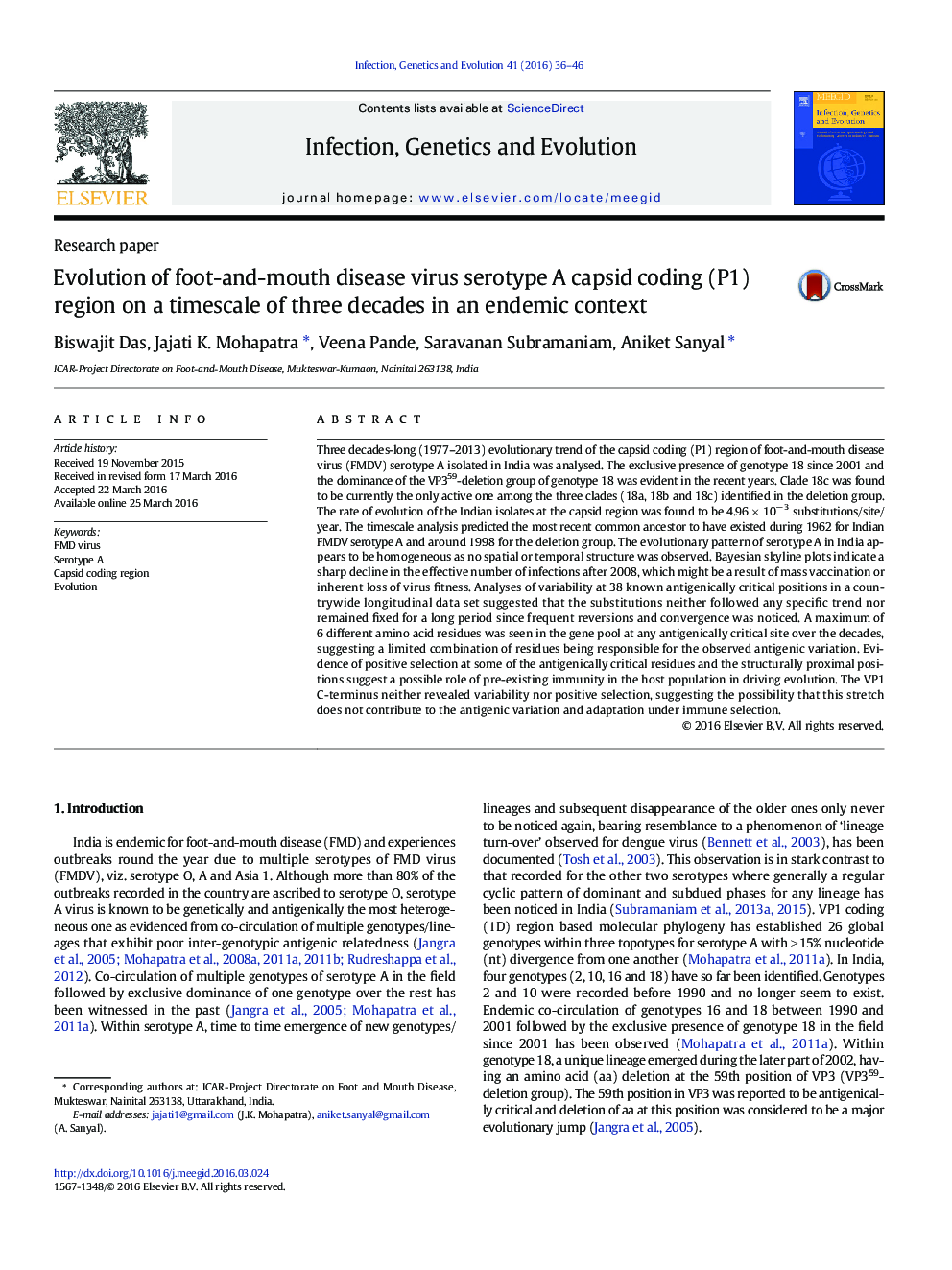| کد مقاله | کد نشریه | سال انتشار | مقاله انگلیسی | نسخه تمام متن |
|---|---|---|---|---|
| 2822895 | 1570162 | 2016 | 11 صفحه PDF | دانلود رایگان |

• FMD virus serotype A capsid coding region evolution over 3 decades in India
• Genotype 18 responsible for all the outbreaks since 2001
• The evolutionary rate was calculated to be 4.96 × 10− 3 substitutions/site/year.
• 9 and 29 codons experiencing positive and episodic selection, respectively
• Limited combinations of substitutions without long-term fixation at antigenic sites
Three decades-long (1977–2013) evolutionary trend of the capsid coding (P1) region of foot-and-mouth disease virus (FMDV) serotype A isolated in India was analysed. The exclusive presence of genotype 18 since 2001 and the dominance of the VP359-deletion group of genotype 18 was evident in the recent years. Clade 18c was found to be currently the only active one among the three clades (18a, 18b and 18c) identified in the deletion group. The rate of evolution of the Indian isolates at the capsid region was found to be 4.96 × 10− 3 substitutions/site/year. The timescale analysis predicted the most recent common ancestor to have existed during 1962 for Indian FMDV serotype A and around 1998 for the deletion group. The evolutionary pattern of serotype A in India appears to be homogeneous as no spatial or temporal structure was observed. Bayesian skyline plots indicate a sharp decline in the effective number of infections after 2008, which might be a result of mass vaccination or inherent loss of virus fitness. Analyses of variability at 38 known antigenically critical positions in a countrywide longitudinal data set suggested that the substitutions neither followed any specific trend nor remained fixed for a long period since frequent reversions and convergence was noticed. A maximum of 6 different amino acid residues was seen in the gene pool at any antigenically critical site over the decades, suggesting a limited combination of residues being responsible for the observed antigenic variation. Evidence of positive selection at some of the antigenically critical residues and the structurally proximal positions suggest a possible role of pre-existing immunity in the host population in driving evolution. The VP1 C-terminus neither revealed variability nor positive selection, suggesting the possibility that this stretch does not contribute to the antigenic variation and adaptation under immune selection.
Journal: Infection, Genetics and Evolution - Volume 41, July 2016, Pages 36–46